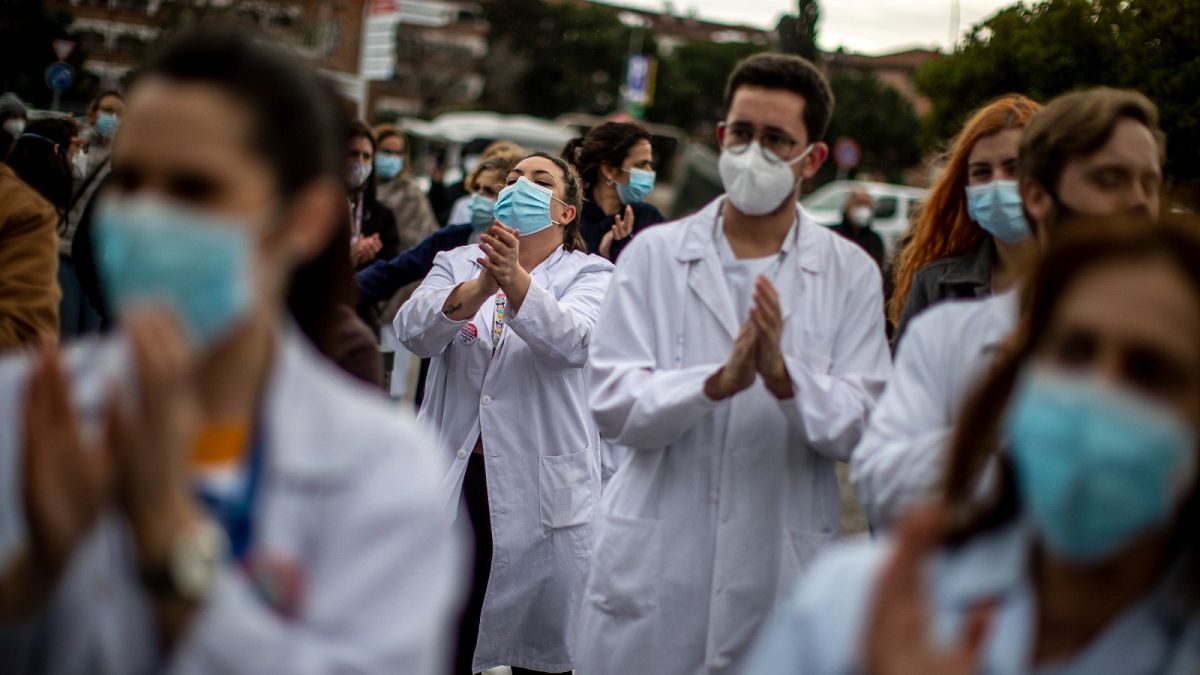The OECD ranked the highest-earning countries by how much they spend on healthcare, but some health systems are still under financial pressure.
The health systems of the world’s most high-earning countries are under huge financial pressure, according to a new report from the Organisation for Economic Co-operation and Development (OECD).
The 2023 Health at a Glance report found that healthcare spending was around 9.2 per cent of GDP in developed countries, down from 9.7 per cent in 2021, reflecting a reduced need for spending post-pandemic and the impact of inflation.
In 11 OECD countries, health spending as a share of GDP in 2022 was lower than in 2019, the report found.
“Amid the increasing demand for services as a result of the combined effect of population ageing and unhealthy lifestyles, health systems need to facilitate better and timelier access to affordable health care, while addressing the lingering after-effects of COVID-19 on mental and physical health,” said OECD Secretary-General Mathias Cormann in a statement.
He added that accelerating the digital transformation of health systems can improve their effectiveness.
The world’s top spender on healthcare was the United States, which disbursed the equivalent of 16.6 per cent of its GDP.
It was followed by Germany, which spends 12.7 per cent of its GDP on healthcare and France, which spends the equivalent of 12.1 per cent of its GDP.
The United States was also the OECD’s top healthcare spender per capita, reaching the equivalent of $12,555 (€11,728) per US citizen. They were followed by Switzerland ($8,049 or €7,519) and Germany ($8,011 or €7,483).
Norway, Austria, the Netherlands, and France were the next top healthcare spenders per capita, according to the OECD.
Annual healthcare spending per capita grew by an average of 2.6 per cent in OECD countries in the years leading up to the COVID-19 pandemic.
Between 2019 and 2022, average per capita spending growth accelerated to 3.3 per cent with a peak in 2021 before contracting in 2022.
The report revealed that many countries have not yet fully recovered from the pandemic with life expectancy falling by 0.7 years on average between 2019 and 2020 in OECD countries.
It remained below pre-pandemic levels in 28 countries, the OECD said, despite some data for 2022 pointing to a recovery.
Where are there the most hospital beds and doctors?
There were an average of 4.3 hospital beds per 1,000 people across OECD countries, with rates in South Korea and Japan higher than in other countries.
The number of beds per capita has decreased in nearly all countries since 2011 due to “greater use of daycare and reductions in the average length of stay,” the OECD report added.
Finland saw the largest decrease, mainly in long-term care and psychiatric care beds.
Meanwhile, the number of doctors in OECD countries increased from 3.5 million in 2011 to 4.3 million in 2021. In all OECD countries, the number of doctors increased more rapidly than the population size.
“Long-held concerns about doctor shortages and the ageing of the medical workforce prompted a large number of OECD countries to increase the number of students in medical education programmes many years ago; as a result, the number of medical students continues to rise in most countries,” the OECD report said.
South Korea and the UK reported substantial increases in the last decade but had low numbers in 2011, while Norway, Germany and Switzerland saw strong growth in the number of doctors despite already having above-average rates.
France and Japan had a more limited increase in the number of doctors between 2011 and 2021, the report found. In France, the number of doctors increased similar to the population size and is projected to fall until 2030 as more doctors retire.
There are plans in some countries to further increase the number of students in medical school, but it will take several years before this translates into fully trained doctors.
The number of medical graduates across OECD countries increased from 93,000 in 2000 to 114,000 in 2010 and to 160,000 in 2021.
In Ireland, the high number of graduates is in part due to the large share of international students, many of whom leave after graduation. This means Ireland has to import doctors trained in other countries to address shortages, the report said.
"In many OECD countries, concerns about doctor shortages relate more specifically to shortages of general practitioners (GPs)...and shortages of doctors in rural and remote regions," the report added.



